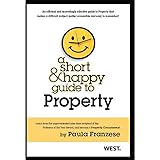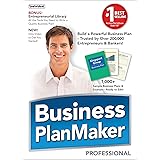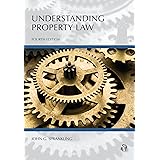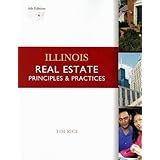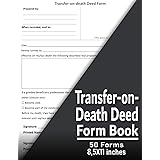Did you know that a single satisfied client can generate up to seven referrals over their lifetime? For new real estate agents, understanding the entire process of how to list and sell a home isn’t just about closing one deal; it’s about building a sustainable career. The journey from initial client contact to the final transfer of ownership involves a meticulous, multi-step approach. While it might seem straightforward to simply post some photos and details online, as highlighted in the accompanying video, the reality is far more complex and requires diligent execution at every stage. Mastering each step ensures not only a successful sale but also positions you as a professional, trustworthy agent.
This comprehensive guide complements the insights shared in the video above, offering a detailed breakdown of the 16 essential steps involved in listing and selling a property. We will explore each phase, providing practical advice and expanding on key concepts vital for any budding real estate professional. By thoroughly grasping this process, you can confidently navigate your first listing and establish a reputation for excellence in the competitive real estate market.
Mastering the Initial Stages of Listing a Property
Step 1: Get the Address and Conduct Thorough Due Diligence
The very first action a new agent should take is securing the property’s address. This crucial piece of information allows you to begin your preparatory work well before meeting the sellers. With the address in hand, you can perform approximately 90% of your initial research, significantly enhancing your preparedness for the listing presentation. This early research involves running comparable sales (comps) on the MLS to understand market values in the area. While a definitive price cannot be set without seeing the property’s current condition, these comparables provide a strong foundational estimate.
Pulling the property’s title is another indispensable part of due diligence. This action reveals the proper names of the sellers, ensuring you address them correctly and that they have the legal right to sell. More importantly, title research uncovers any liens, restrictive covenants, or other legal peculiarities associated with the property. Identifying these potential issues early allows you to address them proactively with your clients, preventing surprises down the line. Being prepared with this information helps you answer questions confidently and demonstrate your expertise.
Step 2: The Crucial Meet and Greet at the Property
Meeting potential sellers at their property is an extensive, yet vital, part of the listing process. Instead of a casual coffee meeting, you should request a comprehensive tour led by the homeowners themselves. The sellers have lived in the house, possessing intimate knowledge of every nook, cranny, and unique comfort the property offers. Their guided tour helps you discover features and aspects that would be impossible to ascertain during a self-guided walk-through.
During the tour, encourage the sellers to share what they love and dislike about their home, including any specific memories or improvements. After the tour, sit down with the sellers, often at their dining table, to deliver your listing presentation. This is your opportunity to showcase your professional brand, highlight your brokerage’s strengths, and present your unique competitive advantages. For instance, innovative social media marketing strategies can set you apart in a crowded market. Following this, you will blend your pre-researched comparables with your observations from the tour to propose an initial list price, initiating the valuation discussion.
Step 3: Discussing Expectations and Signing Essential Documents
After your listing presentation and initial price discussion, it’s paramount to establish clear expectations with the sellers. For example, in a challenging market like Calgary, agents must set realistic timelines for selling a home, acknowledging that a 24-hour sale is not always typical. Honest communication about market conditions prevents misunderstandings and builds trust between you and your clients. Discuss the proposed list price, the desired list date, and the entire listing process, ensuring both parties are aligned.
Once an agreement is reached on the core elements, proceeding to sign the necessary documentation is the next critical step. In areas like Calgary, three primary documents are typically involved. The Exclusive Seller Relationship Agreement formally establishes you as the sole agent representing them, outlining your brokerage, client names, list price, and the listing term (often six months for ample time). This agreement also covers material latent defects, which are hidden issues affecting the property’s value, and crucially, your commission structure. Additionally, the Consumer Relationship Guide defines your fiduciary duties, explaining how you will act in their best interest. Lastly, the FinTrac document collects government identification details, confirming identities and the property’s intent, whether residential or income-generating. These documents are vital for ensuring you are legally covered and proceeding with confidence.
Executing the Listing and Marketing Phase
Step 4: Scheduling Professional Services for Maximum Impact
Preparing a home for sale demands a professional approach, starting with scheduling essential services. Do not rely on smartphone photos; instead, hire a professional real estate photographer to capture the property’s best angles and features. High-quality visuals are non-negotiable for making a strong first impression online and are key to building your professional portfolio. Furthermore, accurate property measurements are critical for MLS listings, requiring a professional measurement service. You must also arrange for sign installation and secure a lockbox, which grants other agents access for showings once the property is live.
For higher-end or unique properties, consider investing in additional marketing content. This might include a captivating property video showcasing its lifestyle, a dedicated single property website, or professionally designed brochures. These supplementary materials elevate the property’s profile and broaden its reach, distinguishing it from other listings. Coordinating all these elements ensures the property is presented in the most appealing and professional manner possible.
Step 5: Uploading Details to the MLS and Preparing for Launch
The Multiple Listing Service (MLS) is the central hub where buyers and agents discover properties. Accurately uploading all property details is an exhaustive but essential task. This involves meticulously documenting the number of bedrooms and bathrooms, the property’s orientation, and any included appliances like air conditioning or specific kitchen fixtures. Every detail, no matter how small, contributes to a complete and attractive listing, stemming directly from your discussions with the sellers and your property walkthrough.
Beyond the physical attributes, setting up the local showing system is integral for managing appointments. This system allows buyer agents to schedule visits efficiently, ensuring smooth operations once the property goes live. Double-checking all information before activation is crucial, as errors can delay the sale or deter potential buyers. A meticulously detailed MLS listing provides clarity and confidence to interested parties, streamlining their decision-making process.
Step 6 & 7: Going Live and Implementing Proactive Marketing
The “Go Live” moment is when all your hard work comes to fruition, and the property becomes active on the MLS. This is when your professional photos and videos are unveiled to a wide audience. However, the work doesn’t stop once the listing is live; this is merely the beginning of the crucial marketing phase. Many agents mistakenly assume that simply being on the MLS is sufficient, allowing the property to become a “sitting duck.” Proactive, consistent marketing is paramount for a quick and successful sale.
Leverage every available platform to promote the listing. Share the link across your professional networks on LinkedIn, integrate it into your social media strategy on Facebook and Instagram, and consider targeted paid Facebook advertising campaigns. Expanding its reach to online marketplaces like Kijiji ensures maximum visibility. Marketing should be an ongoing, consistent effort, not a one-time blast. You must actively work to sell the property, maintaining momentum and enthusiasm until it finds the right buyer.
Managing Offers and Closing the Deal
Step 8: Accepting Showings and Gathering Essential Feedback
Once a property is live on the MLS, it will begin appearing in buyer search criteria, leading to a flurry of showing requests. Buyer agents will schedule appointments to tour the property with their clients, and managing these efficiently is key. A vital part of this step is actively seeking feedback from every showing. While buyer agents are often busy and may not provide feedback automatically, a simple text or call can prompt them. This feedback, whether positive or negative, is invaluable.
Relaying showing feedback to your sellers keeps them informed and engaged in the process. It also provides crucial insights for potential adjustments; for example, consistent negative feedback on pricing or specific property features might signal a need for price adjustments or minor staging changes. Maintaining open communication with sellers throughout this stage reinforces the partnership and demonstrates your commitment to their success.
Step 9: Receiving and Understanding Purchase Offers
After a period of showings, an interested buyer will submit a purchase offer, a pivotal moment in the selling process. This document typically contains several primary components you need to dissect carefully. It will include the property details, like the address and items included in the sale (e.g., dishwasher, refrigerator). The offer also specifies the initial offer price, which will be the starting point for negotiations, and a proposed possession date.
Crucially, the offer outlines the deposit amount and its due date, as well as the buyer’s conditions. Common conditions for a detached home include financing approval and a property inspection. For condos, a review of condo documents is typically included. If the buyer has not yet sold their current property, a “sale of buyer’s property” condition might be present. Additionally, offers often include “terms,” which are specific requests like a pre-possession walkthrough or professional cleaning. Finally, pay close attention to the offer’s expiry date and time, usually around 24 hours, which dictates the negotiation window.
Step 10: Strategic Negotiation to Reach an Agreement
Negotiation is where a real estate agent’s skills truly shine, transforming the initial offer into a mutually acceptable agreement. This exciting phase involves strategic back-and-forth communication to align on key terms: the final sale price, the possession date, and the conditions. Your goal is to secure the highest possible price for your sellers while ensuring all parties are content with the final terms. This often requires creativity and strategic thinking, employing objection handlers to address buyer concerns effectively.
Prepare for multiple rounds of negotiation, which can involve counter-offers on price, adjustments to the possession date, or modifications to conditions. Throughout this process, maintain clear communication with your sellers, guiding them on the best course of action. Reaching a signed agreement signifies a successful negotiation, moving the process forward to the condition period.
Step 11: Navigating the Condition Period
Once an offer is accepted, the condition period begins, during which the buyers work to satisfy their specified conditions. For many buyers, this involves scheduling a property inspection with a professional inspector. This inspection aims to uncover any potential issues with the home, and findings might lead to further negotiations if significant defects are found. Buyers also work with their lenders to secure financing approval, often requiring an appraisal of the property to confirm its value.
If the property is a condominium, buyers will conduct a thorough review of the condo documents, assessing the building’s financial health and rules. As the seller’s agent, you’ll often assist in providing these documents to the buyers’ legal team. During this time, constant communication with the buyer’s agent is essential to track their progress and address any concerns, ensuring a smooth transition towards a firm deal.
Step 12: Waiver of Conditions and Transition to Legal Counsel
The culmination of the condition period is the submission of either a waiver or a non-waiver of conditions. If the buyers successfully satisfy all their conditions – financing is approved, the inspection is satisfactory, and condo documents are reviewed favorably – they will submit a waiver of conditions. This crucial document officially removes all buyer conditions from the purchase contract, making the deal “firm.” Once the deal is firm, the transfer of responsibility largely shifts to legal professionals.
A non-waiver of conditions, conversely, means the buyers are not proceeding with the purchase, often due to issues with financing, inspection findings, or simply cold feet. In this scenario, the deal becomes null and void. Assuming a waiver is submitted, lawyers become actively involved to handle the legal transfer of title and all associated paperwork. While your direct involvement decreases, you still play a role in ensuring a smooth handover, especially if a pre-possession walkthrough is scheduled. Ensure the property is in impeccable condition for any final buyer walkthrough to prevent last-minute renegotiations.
Long-Term Success: Post-Possession Nurturing
The journey with your client doesn’t end on possession day. Maintaining communication and nurturing client relationships post-sale is critical for a thriving real estate career. Remember, a single satisfied client can become a source of consistent referrals, potentially bringing in seven new leads over their lifetime. Stay in touch by providing ongoing value, whether through monthly market activity reports, community updates, or simply a friendly check-in. By continuing to offer support and insights, you remain top-of-mind. This proactive approach ensures client loyalty and transforms one successful sale into a cascade of future opportunities, continually expanding your professional network.


